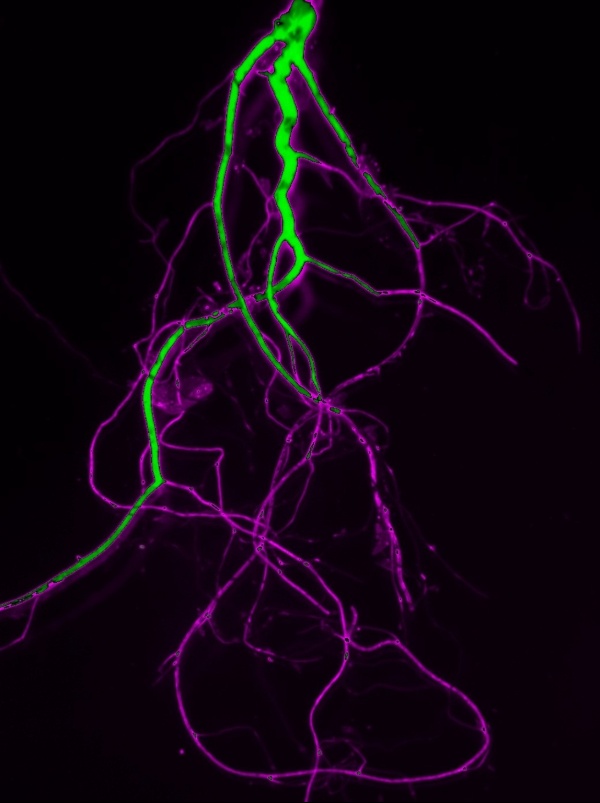
Plant roots acquire water and nutrients from the soil and transport them upwards to the aerial parts. This function is reflected by their anatomy: water and nutrients move radially through the concentric layers of epidermis and cortex before entering the vasculature through the endodermis. Functionally, the plant root can be seen as an “inverted gut”, where the two epithelial characteristics (i.e. selective acquisition and diffusion barrier) are split between two cell layers: the epidermis at the root periphery with its root hairs, and the endodermis, the innermost cortical cell layer, which surrounds the vasculature. This arrangement allows for three uptake scenarios for nutrients: the “symplastic pathway”, where the outer cells actively take up nutrients, which are then transported from cell to cell through cytoplasmic connections (plasmodesmata); the “apoplastic pathway” (paracellular), where nutrients are transported along the intercellular space (apoplast); and the “coupled trans-cellular pathway”, where nutrients are transported sequentially from one cell to another by polarized influx and efflux carriers. Therefore, it is essential to study nutrient acquisition whithin the context of root develoment and differentiation.

The plant roots as a polarized epithelium
A. Schematic comparison between animal intestinal epithelia and plant roots. Functional and structural similarities between animal epithelia and plant roots are represented with the same color code (red shades indicate acquisition from outside, and green shades indicate transport inside the corresponding vascular systems). Adapted from Barberon and Geldner, Plant Physiology 2014.
B. Schematic view of the three pathways for radial transport of nutrients across root cell layers: apoplastic, symplastic and coupled transcellular pathways. Adapted from Barberon M., New Phytologist, 2017.